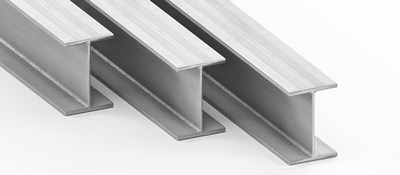Understanding high-strength stainless steel for precision machinery
High-strength stainless steel is ideal for precision machinery due to its superior mechanical properties combined with excellent corrosion resistance. It provides significant advantages in weight reduction without sacrificing strength, offering uniform load distribution across all axes. This combination creates a material perfectly suited for precision applications where structural stability and consistent performance are paramount. The inherent properties of high-strength stainless steel, particularly lean duplex (LDX) grades, deliver enhanced durability and dimensional stability in demanding environments, making it the optimal choice for machinery requiring exact tolerances and reliable operation.
Understanding high-strength stainless steel for precision machinery
High-strength stainless steel represents a significant advancement in materials science that combines exceptional mechanical properties with superior corrosion resistance. This unique combination makes it particularly valuable for precision machinery applications where consistent performance and dimensional stability are non-negotiable requirements.
At its core, high-strength stainless steel offers an optimal balance of structural integrity and weight reduction—a critical consideration in precision machinery design. The material’s ability to maintain exact tolerances while resisting environmental stressors makes it ideal for components that must perform reliably in demanding conditions.
With over 50 years of experience, we at Stalatube have developed extensive expertise in high-strength stainless steel solutions. Our comprehensive range of stainless steel hollow sections and profiles is specifically engineered to meet the exacting requirements of precision machinery applications, providing the ideal balance of strength, stability and sustainability.
What makes high-strength stainless steel different from standard stainless steel?
High-strength stainless steel, particularly lean duplex (LDX) stainless steel, offers significantly enhanced mechanical properties compared to standard grades. The fundamental difference lies in its microstructural composition, which combines the beneficial properties of both austenitic and ferritic stainless steels into a single material with superior performance characteristics.
While standard stainless steel typically provides yield strengths of 200-250 MPa, high-strength variants can deliver yield strengths exceeding 500 MPa. This dramatic improvement in strength-to-weight ratio allows for thinner wall sections and lighter components without compromising structural integrity—a crucial advantage in precision machinery design.
Despite these enhanced properties, high-strength stainless steel maintains excellent formability and weldability. The material offers superior resistance to stress corrosion cracking and greater fatigue resistance, making it particularly valuable in applications experiencing cyclic loading or vibration—common challenges in precision machinery environments.
How does high-strength stainless steel improve precision machinery performance?
High-strength stainless steel delivers substantial performance improvements in precision machinery through several key mechanisms. The material’s enhanced mechanical properties translate directly into operational advantages that benefit both machine functionality and longevity.
Square and rectangular hollow sections provide uniform strength across all axes, enabling optimal load distribution throughout the machine structure. This uniform distribution eliminates weak points that could compromise precision and introduces stability that conventional materials struggle to match.
The exceptional strength-to-weight ratio of high-strength stainless steel allows for structural components that are lighter yet equally strong. This weight reduction decreases inertia in moving parts, enabling faster acceleration and deceleration cycles while maintaining precision—a critical factor in high-performance machinery. Additionally, the material’s inherent vibration dampening properties help maintain precise tolerances during operation.
Why is structural stability crucial for precision machinery applications?
Structural stability represents the foundation of precision machinery performance. Without it, even the most sophisticated control systems cannot deliver accurate and repeatable results. Dimensional consistency under varying loads and environmental conditions directly determines a machine’s capability to maintain precise tolerances and produce consistent output.
Our hollow sections excel in providing this essential stability. Unlike open profiles that may twist or deform under load, stainless steel hollow sections distribute forces uniformly across their structure. This superior load-bearing capability paired with relatively low weight creates an ideal combination for precision applications where deflection must be minimized.
The thermal stability of high-strength stainless steel further enhances precision machinery performance. With lower thermal expansion coefficients than many alternative materials, it maintains dimensional accuracy across temperature variations—a critical factor in environments where temperature fluctuations could otherwise compromise precision operations.
How are high-strength stainless steel components manufactured for precision machinery?
The manufacturing process for high-strength stainless steel components significantly influences their performance in precision machinery applications. We utilize specialized forming techniques that preserve and enhance the material’s inherent properties while achieving exact dimensional specifications.
Roll forming represents our primary method for creating high-strength stainless steel hollow sections. This continuous process progressively bends the material to achieve the desired profile shape, maintaining consistent mechanical properties throughout. For more complex geometries, press braking offers precise control over forming angles and dimensions.
Following forming, advanced welding processes ensure structural integrity without compromising the material’s properties. For lean duplex grades, we recommend pulsed arc MAG welding to maintain optimal strength at the joints. These manufacturing methods enhance rather than diminish the material’s inherent advantages, delivering components that meet the exacting requirements of precision machinery applications.
Key benefits of choosing high-strength stainless steel for precision machinery
Selecting high-strength stainless steel for precision machinery delivers a comprehensive package of advantages that extend throughout the equipment’s operational lifespan. The material’s exceptional durability in challenging environments ensures consistent performance where other materials might degrade or fail.
High-strength stainless steel’s inherent corrosion resistance eliminates the need for protective coatings or treatments, reducing both initial manufacturing steps and ongoing maintenance requirements. This corrosion resistance ensures that precision is maintained throughout the machinery’s service life, even in harsh operating conditions.
The sustainability advantages cannot be overlooked—lighter components reduce overall machine weight, decreasing energy consumption during operation. Additionally, the material’s 100% recyclability and significant recycled content contribute to reduced environmental impact, an increasingly important consideration in contemporary machinery design.
Our high-strength stainless steel solutions provide the optimal balance of performance, longevity, and sustainability for precision machinery applications. With superior load-bearing capacity, exceptional dimensional stability, and resistance to environmental stressors, they represent the ideal choice for machinery where precision is paramount and performance must remain consistent over an extended service life.
This article was created with the help of AI and reviewed by a human. It may include mistakes.
